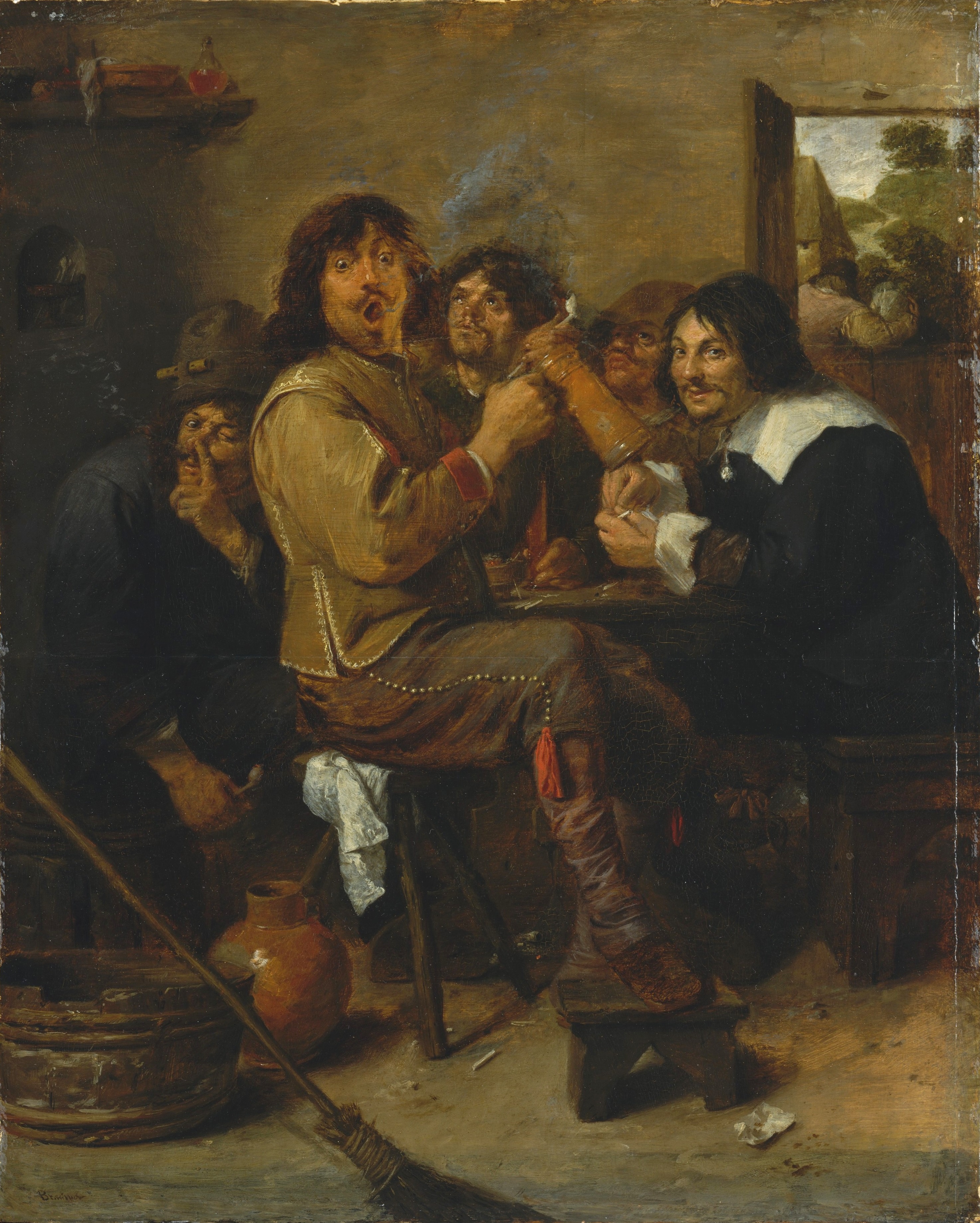|
Toad Toxin
Bufotoxins are a family of toxic steroid lactones or substituted tryptamines of which some are toxic. They occur in the parotoid glands, skin, and poison of many toads (Bufonidae family) and other amphibians, and in some plants and mushrooms. The exact composition varies greatly with the specific source of the toxin. Composition Bufotoxins can contain 5-MeO-DMT, bufagins, bufalin, bufotalin, bufotenin, bufothionine, dehydrobufotenine, epinephrine, norepinephrine, and serotonin. Some authors have also used the term ''bufotoxin'' to describe the conjugate of a bufagin with suberylarginine. The toxic substances found in toads can be divided by chemical structure in two groups: #bufadienolides, which are cardiac glycosides (e.g., bufotalin, bufogenin), are compounds that may be fatal if consumed. #tryptamine-related substances (e.g., bufotenin), are sought after for entheogenic and/or recreational purposes by some individuals. However, the practice of using these substances de ... [...More Info...] [...Related Items...] OR: [Wikipedia] [Google] [Baidu] |
Steroid
A steroid is an organic compound with four fused compound, fused rings (designated A, B, C, and D) arranged in a specific molecular configuration. Steroids have two principal biological functions: as important components of cell membranes that alter membrane fluidity; and as signal transduction, signaling molecules. Examples include the lipid cholesterol, sex hormones estradiol and testosterone, anabolic steroids, and the anti-inflammatory corticosteroid drug dexamethasone. Hundreds of steroids are found in Fungus, fungi, plants, and animals. All steroids are manufactured in cells from a sterols, sterol: Cholesterol, cholesterol (animals), lanosterol (opisthokonts), or cycloartenol (plants). All three of these molecules are produced via Cyclic compound, cyclization of the triterpene squalene. Structure The steroid nucleus (parent structure, core structure) is called gonane (cyclopentanoperhydrophenanthrene). It is typically composed of seventeen carbon atoms, bonded in fou ... [...More Info...] [...Related Items...] OR: [Wikipedia] [Google] [Baidu] |
Nannophryne Variegata
''Nannophryne variegata'', known also as the Eden Harbour toad or Patagonian toad, is a species of toad in the family Bufonidae. It is found in southern Argentina (from Neuquén southwards) and Chile. There is also a record from Peru, but this requires confirmation given its great geographic and ecological isolation. It occurs in Tierra del Fuego south to 53°S, making it the southernmost amphibian in the world, a record shared with '' Batrachyla antartandica''. Its natural habitats are temperate to cold humid forests, bogs, and Magellanic tundra. It occurs in marshes, under logs in the ''Nothofagus'' forest region as well as tundra surrounded by low stature ''Nothofagus ''Nothofagus'', also known as the southern beeches, is a genus of 43 species of trees and shrubs native to the Southern Hemisphere, found across southern South America (Chile, Argentina) and east and southeast Australia, New Zealand, New Guin ...'' forest in the subantarctic region. Reproduction takes place ... [...More Info...] [...Related Items...] OR: [Wikipedia] [Google] [Baidu] |
Rhinella Diptycha
''Rhinella diptycha'', sometimes referred to as Cope's toad, Schneider's toad, cururu toad, or rococo toad, is a toad found in northern Argentina, Paraguay, Uruguay, eastern Bolivia, and eastern and southern Brazil. Classification It is one of three rather similar species sometimes referred to as "cururu toads" in Brazil, the others being '' R. jimi'' and '' R. marina'' (cane toad). Like those, ''R. diptycha'' is a large toad, females up to in snout–to–vent length and males up to . ''Rhinella diptycha'' is a widespread and very common species that occurs in a variety of habitats but most commonly in open and urban ones. It breeds in permanent and temporary ponds, preferring ones without much vegetation. Its natural habitats include dry savanna, freshwater marshes, and intermittent freshwater marshes. It is threatened by habitat loss Habitat destruction (also termed habitat loss or habitat reduction) occurs when a natural habitat is no longer able to support its nat ... [...More Info...] [...Related Items...] OR: [Wikipedia] [Google] [Baidu] |
Rhinella Arenarum
''Rhinella arenarum'' is a species of toad in the family Bufonidae that is found in southern Brazil, Uruguay, Paraguay, Argentina (Chubut Province Chubut ( from Tehuelche language, Tehuelche 'transparent'; ) is a provinces of Argentina, province in southern Argentina, situated between the 42nd parallel south (the border with Río Negro Province), the 46th parallel south (bordering Santa ... northward) and Bolivia (east of the Andes). ''Rhinella arenarum'' inhabits small ponds or bogs with stagnant water, in dry, temperate habitats, mostly in open areas. It is locally common. While it is collected for educational and scientific uses and also suffers from road kills, it in general is not threatened. Fossils representing this species are known with certainty from the late Pliocene to the Holocene of central Argentina. References arenarum Amphibians described in 1867 Frogs of Brazil Amphibians of Bolivia Amphibians of Argentina Amphibians of Uruguay Taxonomy arti ... [...More Info...] [...Related Items...] OR: [Wikipedia] [Google] [Baidu] |
Colorado River Toad
The Colorado River toad (''Incilius alvarius''), also known as the Sonoran Desert toad, is a toad species found in northwestern Mexico and the southwestern United States. It is well known for its ability to exude toxins from glands within its skin that have psychoactive properties. Description The Colorado River toad can grow to about long and is the largest toad in the United States apart from the non-native cane toad (''Rhinella marina''). It has a smooth, leathery skin and is olive green or mottled brown in color. Just behind the large golden eye with horizontal pupil is a bulging kidney-shaped parotoid gland. Below this is a large circular pale green area which is the tympanum or ear drum. By the corner of the mouth there is a white wart and there are white glands on the legs. All these glands produce toxic secretions. Its call is described as, "a weak, low-pitched toot, lasting less than a second." Dogs (''Canis familiaris'') that have attacked toads have suffered paraly ... [...More Info...] [...Related Items...] OR: [Wikipedia] [Google] [Baidu] |
5-HO-DMT
Bufotenin, also known as dimethylserotonin or as 5-hydroxy-''N'',''N''-dimethyltryptamine (5-HO-DMT), is a serotonergic psychedelic of the tryptamine family. It is a derivative of the psychedelic dimethyltryptamine (DMT) and of the neurotransmitter serotonin (5-hydroxytryptamine; 5-HT). The compound is an alkaloid found in some species of mushrooms, plants, and toads. It is also found naturally in the human body in small amounts. Bufotenin, for instance derived from the trees ''Anadenanthera colubrina'' and ''Anadenanthera peregrina'', has a long history of entheogenic use as a snuff in South America. The name bufotenin originates from the toad genus '' Bufo'', which includes several species of psychoactive toads, most notably '' Incilius alvarius'' (formerly ''Bufo alvarius''), that secrete bufotoxins from their parotoid glands. However, ''Bufo'' and related species like ''Incilius alvarius'' contain only trace amounts of bufotenin, with their major active component instead ... [...More Info...] [...Related Items...] OR: [Wikipedia] [Google] [Baidu] |
Ethics
Ethics is the philosophy, philosophical study of Morality, moral phenomena. Also called moral philosophy, it investigates Normativity, normative questions about what people ought to do or which behavior is morally right. Its main branches include normative ethics, applied ethics, and metaethics. Normative ethics aims to find general principles that govern how people should act. Applied ethics examines concrete ethical problems in real-life situations, such as abortion, treatment of animals, and Business ethics, business practices. Metaethics explores the underlying assumptions and concepts of ethics. It asks whether there are objective moral facts, how moral knowledge is possible, and how moral judgments motivate people. Influential normative theories are consequentialism, deontology, and virtue ethics. According to consequentialists, an act is right if it leads to the best consequences. Deontologists focus on acts themselves, saying that they must adhere to Duty, duties, like t ... [...More Info...] [...Related Items...] OR: [Wikipedia] [Google] [Baidu] |
Responsible Drug Use
Responsible drug use seeks to maximize the benefits and minimize the risks associated with psychoactive drug use. For illegal psychoactive drugs that are not diverted prescription controlled substances, some critics believe that illegal recreational drug use is inherently irresponsible, due to the unpredictable and unmonitored strength and purity of the drugs and the risks of Substance use disorder, addiction, infection, and other side effects. Nevertheless, harm reduction advocates claim that the user can be responsible by employing the same general principles applicable to the use of alcohol (drug), alcohol: avoiding hazardous situations, excessive doses, and hazardous combinations of drugs; avoiding injection; and not using drugs at the same time as activities that may be unsafe without a sober state. Drug use can be thought of as an activity that is potentially beneficial but also potentially risky. Similar to other risky activities such as skydiving or mountain climbing, the va ... [...More Info...] [...Related Items...] OR: [Wikipedia] [Google] [Baidu] |
Recreational Drug
Recreational drug use is the use of one or more psychoactive drugs to induce an altered state of consciousness, either for pleasure or for some other casual purpose or pastime. When a psychoactive drug enters the user's body, it induces an Substance intoxication, intoxicating effect. Recreational drugs are commonly divided into three categories: depressants (drugs that induce a feeling of relaxation and calmness), stimulants (drugs that induce a sense of energy and alertness), and hallucinogens (drugs that induce perceptual distortions such as hallucination). In popular practice, recreational drug use is generally tolerated as a social behaviour, rather than perceived as the medical condition of self-medication. However, drug use and drug addiction are Social stigma, severely stigmatized everywhere in the world. Many people also use prescribed and controlled depressants such as opioids, opiates, and benzodiazepines. What controlled substances are considered generally unlawful t ... [...More Info...] [...Related Items...] OR: [Wikipedia] [Google] [Baidu] |
Entheogen
Entheogens are psychoactive substances used in spiritual and religious contexts to induce altered states of consciousness. Hallucinogens such as the psilocybin found in so-called "magic" mushrooms have been used in sacred contexts since ancient times. Derived from a term meaning "generating the divine from within" entheogen have been used to facilitate transcendence, heaving, divination and mystical insight. Entheogens have been used in various ways, including as part of established religious rituals and as aids for personal spiritual development. Anthropological study has established that entheogens are used for religious, magical, shamanic, or spiritual purposes in many parts of the world. Civilizations such as the Maya and Aztecs used psilocybin mushrooms, peyote, and morning glory seeds in ceremonies meant to connect with deities and perform healing. They have traditionally been used to supplement many diverse practices geared towards achieving transcendence, including ... [...More Info...] [...Related Items...] OR: [Wikipedia] [Google] [Baidu] |
Tryptamine
Tryptamine is an indolamine metabolite of the essential amino acid tryptophan. The chemical structure is defined by an indole—a fused benzene and pyrrole ring, and a 2-aminoethyl group at the second carbon (third aromatic atom, with the first one being the heterocyclic nitrogen). The structure of tryptamine is a shared feature of certain aminergic neuromodulators including melatonin, serotonin, bufotenin and psychedelic derivatives such as dimethyltryptamine (DMT), psilocybin, psilocin and others. Tryptamine has been shown to activate serotonin receptors and trace amine-associated receptors expressed in the mammalian brain, and regulates the activity of dopaminergic, serotonergic and glutamatergic systems. In the human gut, bacteria convert dietary tryptophan to tryptamine, which activates 5-HT4 receptors and regulates gastrointestinal motility. Multiple tryptamine-derived drugs have been developed to treat migraines, while trace amine-associated receptors are bei ... [...More Info...] [...Related Items...] OR: [Wikipedia] [Google] [Baidu] |






